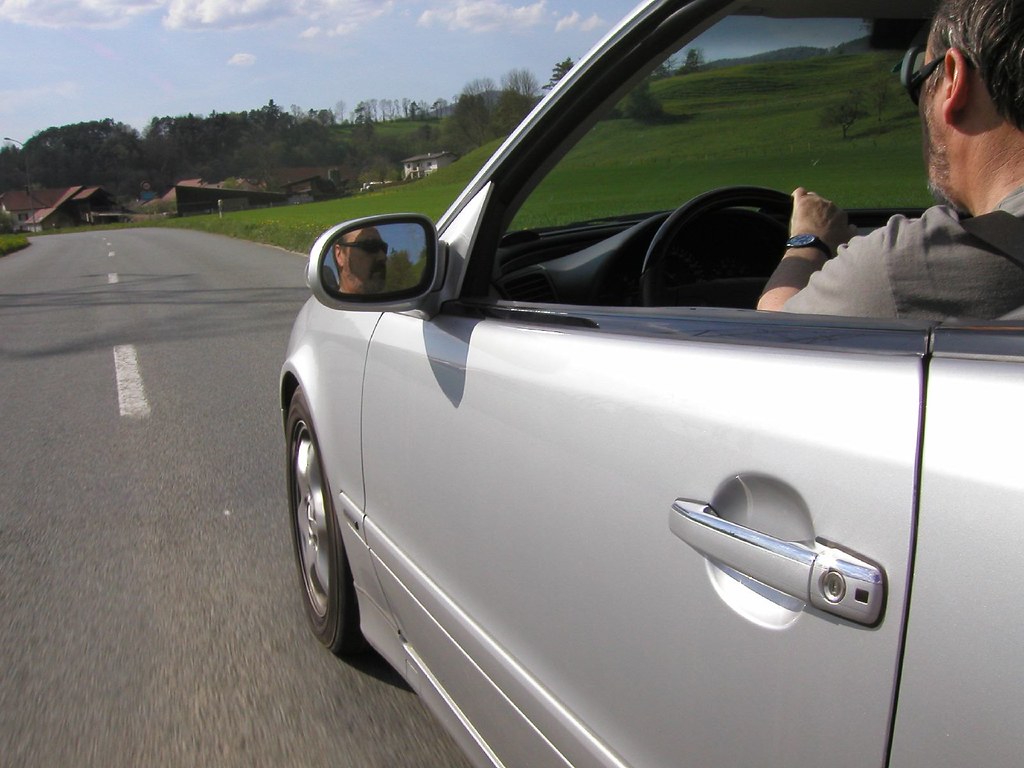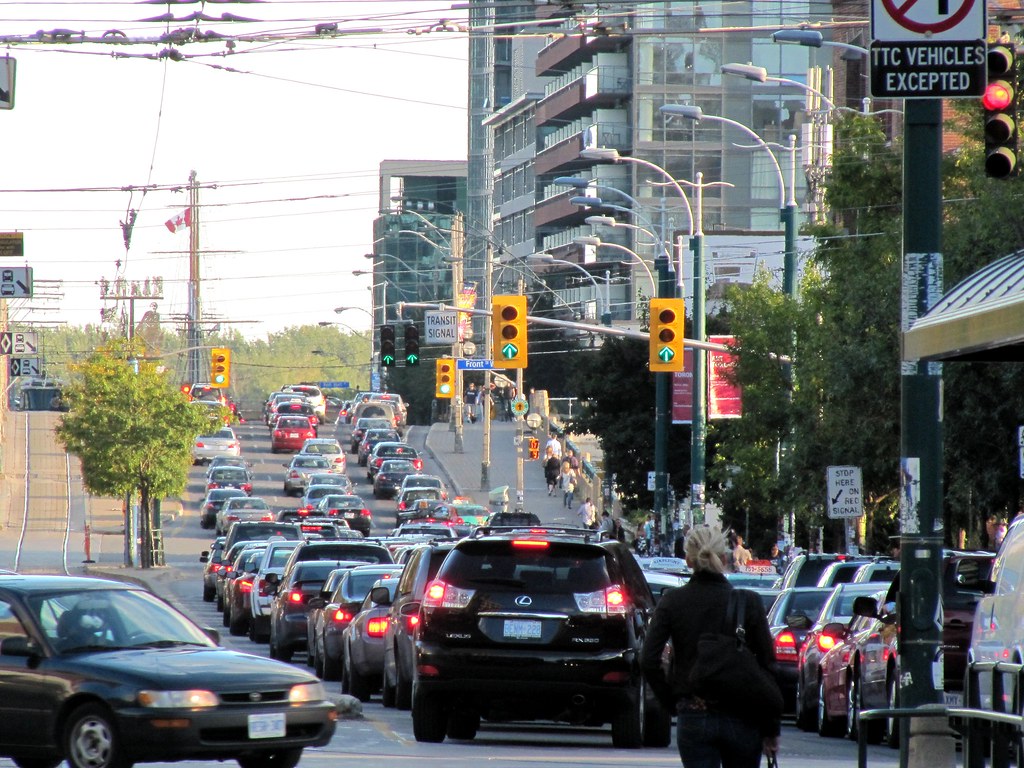
Millions of Americans face the driving test each year, and for many, it’s a hurdle that requires multiple attempts. The practical on-the-road DMV test is the last step before getting your driving license, and it is important to prepare for it as you would for any other exam. While the written knowledge test is often straightforward for most, the practical road test is where many learners falter, not always due to a lack of skill, but often from making common, easily avoidable mistakes. Believe it or not, most fail their test for the same reasons.
Understanding the common pitfalls is the first step toward success. Examiners look for a pattern of safe and confident driving, and some mistakes, like failing to fasten your seatbelt or making rolling stops, can even result in an automatic failure. This guide breaks down 15 of the most common reasons people fail their driving test and, crucially, provides actionable advice on how to sidestep these critical errors. By knowing what these common mistakes are—some of which result in an automatic fail—you can prevent making those same slip-ups on the day of your test, ensuring you’re fully prepared to pass with confidence.
Let’s dive into these top reasons why student drivers often miss the mark and discover what you can do to breeze through your exam, transforming potential failures into passing triumphs. Our goal is to equip you with the insights and strategies needed to master the road test, paving your way to becoming a safe and licensed driver. This isn’t just about passing; it’s about building habits for a lifetime of safe driving.

1. **Failing to Fasten Seatbelt**It might sound incredibly basic, but neglecting to fasten your seatbelt is a mistake many students make on their driving test. You should always fasten your seatbelt after entering a motor vehicle, whether you are the driver or a passenger. Despite being such a simple task, fastening your seatbelt is by far the most fundamental practice of motor vehicle operation, underpinning all other safety measures on the road.
This simple oversight can be attributed to a variety of factors, from pre-test fear and anxiety to sheer nervousness. The pressure of the examination can cause even the most fundamental habits to momentarily slip your mind. However, failing to do so before putting the car in motion will result in an automatic fail on your road test, making it a critical error to prevent.
If you find yourself forgetting to buckle up when you get behind the wheel, you’re not out of luck when it comes to breaking this habit. The key is consistent, conscious effort. Simply make a deliberate effort to fasten your seatbelt immediately upon entering any vehicle, for any reason. Whether you are driving or simply sitting along for the ride, performing this action every single time you get in a car will eventually make it second nature.
By diligently practicing this habit, it will become an afterthought. At the time of your driving test, you will have no issues remembering to buckle your seatbelt before taking off, ensuring you avoid an unnecessary automatic fail. Remember, a click can save your driving test—and potentially your life!
Read more about: The Definitive Consumer Report: Unmasking the Vehicles and Manufacturers Plagued by the Most Recalls in Automotive History
2. **Rolling Stops / Incomplete Stops**Another frequent reason for an automatic fail on the driving test is the failure to make complete stops at stop signs. Many drivers, whether experienced or new, often slow down considerably but do not actually come to a full, complete stop. This ‘rolling stop’ is not only an automatic failure during your road test but is also illegal in all states and carries a fine of $75 to $500 or more, depending on local law.
Your vehicle should cease motion completely before you continue. Examiners are keen to observe that you bring the car to a full halt and, crucially, that you stop behind the demarcation line. Stopping before the line is as important as stopping itself, ensuring you don’t impede cross-traffic or pedestrians before assessing the intersection.
To correct this, make a conscious effort to practice driving through neighborhoods. At each and every stop sign, bring your vehicle to a fully complete stop, ensuring the wheels entirely cease motion. Don’t be afraid to hold your foot on the brake for a few moments to ensure you have truly come to a complete stop—it’s much better to be safe than sorry, and it makes your intention clear to the examiner.
By practicing this until it’s ingrained, you’ll develop the habit of making a definitive, full stop every time. This will not only help you pass your driving test but also instill a vital safe driving practice that protects you and others on the road.
Read more about: The 13 Critical Welding Defects That Can Turn Your Weight Bench Into a Money Pit: A Guide to Avoid Structural Failure

3. **Driving Too Quickly (Speeding)**Driving over the speed limit is an immediate red flag for examiners and will result in an immediate fail on most states’ driving tests. The dangers involved with operating vehicles at high speeds are significant, making adherence to posted limits a fundamental expectation. Many student drivers don’t speed out of recklessness, but rather due to anxiety or nervousness, causing them to inadvertently press the accelerator too hard.
Conversely, there are times when it is not safe to drive at the speed limit. If there is rain, fog, an accident, or traffic congestion, you must slow down to a safe speed, demonstrating your ability to adjust to conditions. The examiner is not just looking for adherence to the number, but also for good judgment.
To ease any fears you may have during the examination and prevent speeding, be sure to take a quick test drive before you head to the DMV. This familiarization can make you much more relaxed with some drive time under your belt. This calmness will allow you to be more attentive to road signs, and much less likely to speed due to anxiety or confusion.
In general, you want to stay at or below the posted speed limit. You will find these signs placed before and after every intersection on service roads, and after every 1-5 miles on the freeway. Constantly monitor your speedometer and adjust your speed accordingly. Always make sure that you’re driving within the posted speed limit, but also understand when conditions dictate an even slower, safer pace.

4. **Driving Too Slowly**While avoiding speeding is critical, driving too slowly is another common mistake that can be just as problematic, if not more dangerous, than driving at high speeds. This is because lagging drivers can greatly disrupt the normal flow of traffic, creating unpredictable situations for other motorists. A slow motorist combined with a few inattentive drivers on a freeway can spell disaster for all parties involved.
Being overly careful by driving considerably below the speed limit can cause unsafe conditions for yourself and other drivers, sending a signal of a lack of confidence behind the wheel. Examiners look for confidence, and while you want to be careful and follow defensive driving rules, being overly cautious could negatively impact your score. You need to demonstrate control and appropriate judgment.
If you’re making the mistake of driving too slowly, it is important to remember to take notice of speed limits on roadways in your area. While these signs tell you the maximum speed your vehicle should reach, it is generally good practice to stay within 10-15 mph below that limit, and no more than 5 mph above. This allows for a safe buffer while still maintaining traffic flow.
Continuously monitor your speed and the flow of traffic. Adjust your pace to match the conditions and the posted limits, ensuring you neither rush nor impede other vehicles. The goal is to drive confidently and safely, maintaining a speed that is appropriate for the road and traffic conditions while staying within legal limits.
Read more about: Unleash Your Inner Warrior: 15 Gladiator-Inspired Exercises for Modern Strength and Stamina

5. **Improper Lane Changes**Improper lane changes are a common area where student drivers lose points, and in some cases, can even lead to an automatic fail. It’s not simply about physically moving the steering wheel; there are several critical steps to remember when changing lanes safely. Failing to properly and safely switch from one lane to another will definitely result in your examiner marking you down several points.
Many people fail to execute proper lane changes all the time, including during the DMV test. This often stems from either forgetting a step or executing it incorrectly. Examiners need to see a methodical and safe approach to this maneuver, which is a high-risk action if done poorly.
When changing lanes, always remember to first survey your surroundings comprehensively. Check your rearview mirror, then your side view mirror, and finally, your blind spot before committing to the lane change. Failing to do any of these will result in a failing mark on the ‘lane change’ portion of the driver’s test. This sequence ensures you have a full picture of your immediate environment.
Additionally, students must signal their intention at least 5 seconds before beginning to change lanes. Once you have observed traffic in all directions, signaled your intent clearly, and ensured it is safe, move smoothly into the new lane. Remember, never change lanes when passing through an intersection, whether you are going straight or making a turn. Wait until you are safely past the intersection to make the lane change.
Read more about: Unlock Your Potential: 15 Proven Breathing Techniques for Athletes to Conquer Anxiety and Boost Performance

6. **Failure to Yield Right-of-Way (including pedestrians)**Failing to understand or correctly yield the right-of-way is a critical safety error that can easily lead to an automatic failure. This encompasses a range of scenarios, including failing to yield to pedestrians in a crosswalk, not yielding to traffic with the right-of-way at an intersection, or incorrectly navigating a four-way stop. Entering a crosswalk at an intersection or school zone before it is free of pedestrians is incredibly dangerous and could be grounds for an automatic failure.
Another specific but crucial scenario is not stopping for school buses. When a school bus stops and shows its stop sign arm or flashes red lights, you must stop—regardless of whether children are visible. Many test-takers either miss the signals entirely or slow down without fully stopping, which is an automatic failure. This rule exists to protect children who may be crossing unpredictably.
To ensure you master this, study the right-of-way rules in your driver’s handbook until they are second nature. Understand the hierarchy of who goes first in various situations, whether it’s at a simple intersection or a complex traffic merge. When in doubt, it is always safer to yield the right-of-way than to risk a collision or confusion.
Always be prepared to stop for pedestrians at all times; if a person enters or looks as though he or she is about to enter a crosswalk, make sure the person has reached the other side of the street safely before you proceed. This demonstrates not just rule adherence, but a genuine awareness of safety and courtesy on the road.

7. **Poor Observation & Traffic Sign Misinterpretation**Examiners are not just looking at your hands on the wheel; they are keeping a keen eye on your observation skills. Poor observation, particularly when it comes to mirrors and traffic signs, is a frequent cause of failed tests. Forgetting to consistently check your rearview and side mirrors suggests a lack of spatial awareness and can indicate you are not fully informed of your driving environment at all times.
Often, learners focus too much on the road directly ahead and forget to scan the surroundings for key information like upcoming traffic signs. Others might notice signs too late to act correctly, leading to misinterpretations or late reactions. Misinterpreting or ignoring traffic signs, such as stop signs, yield signs, or speed limit signs, is a major red flag for examiners because it demonstrates a fundamental lack of knowledge of road rules.
To avoid missing points, you will want to check your right side, rearview, and left side mirror about every 5-10 seconds, making your head movements obvious so the examiner can clearly see you are actively observing. Exaggerate your mirror checks; points will be deducted if your instructor can’t determine if you checked your mirrors, even if you actually did. Additionally, always check your blind spot when changing lanes.
Develop a consistent “mirror-signal-maneuver” routine, and at junctions, look left, right, and then left again before proceeding. Regularly review your state’s driver’s handbook to solidify your understanding of all signs and signals. While driving, actively scan for and identify signs and signals well in advance so you have plenty of time to react appropriately, proving that you can follow road rules and drive safely under real-world conditions.
Navigating the complexities of the road test extends far beyond basic maneuvers; it delves into advanced vehicle control, specific parking techniques, maintaining safe distances, mastering complex intersections, adapting to diverse conditions, ensuring vehicle readiness, and even managing the psychological pressure of the exam. The second half of our guide tackles these often-overlooked yet critical aspects, providing you with the insights and actionable strategies needed to tackle these more nuanced challenges head-on. By understanding these advanced pitfalls and their straightforward solutions, you’re not just preparing to pass; you’re cultivating the habits of a truly confident and capable driver.
Read more about: Driving Expert’s Clever Hacks: Mastering Safe Backing and Crowded Area Navigation to Eliminate Guesswork

8. **Applying Excessive Brake Pressure**Bringing your vehicle to a stop is a fundamental action every driver performs constantly, but there’s a proper way to do it. Improper braking, characterized by harsh, rough, or sudden pressure, can be a major red flag for examiners. This isn’t just about comfort; it can indicate a lack of control and awareness, and in some situations, it can even lead to an automatic failure during your driving test. Smooth, controlled stops are a hallmark of a skilled driver.
Often, students apply excessive brake pressure due to nerves, misjudging distances, or simply not being fully familiar with the vehicle’s braking system. A jerky stop can be unsettling for passengers and, more importantly, signal to the examiner that you lack the finesse required for safe driving. The goal is to decelerate gradually and smoothly, coming to a gentle halt without abrupt movements.
To master this, practice applying brake pressure gently and consistently at first. As you approach your stopping point, gradually increase your braking pressure based on the distance remaining. You can hone this skill effectively during city driving, focusing on intersections and traffic lights, or by practicing in a large, empty parking lot. This controlled environment allows you to develop the muscle memory for smooth deceleration without the added pressure of live traffic.
Keep this technique top of mind, especially when approaching intersections, stop signs, or other locations where you’re most likely required to come to a halt. The more you practice smooth braking, the more it will become second nature, demonstrating poise and precision behind the wheel.
Read more about: Emergency Ready: Your Step-by-Step Guide to Safely Changing a Tire on a Busy Highway

9. **Improper Parallel Parking**Parallel parking is notoriously one of the most challenging skills for new drivers, and even many experienced motorists would rather circle the block than attempt it. In many states, including Texas, successfully completing a parallel park is a mandatory requirement for obtaining your driver’s license. Failing this maneuver often results in lost points, and significant errors like hitting other cars or forcefully running over a curb can lead to an automatic failure.
This maneuver tests your spatial awareness, vehicle control, and ability to follow a sequence of steps under pressure. The complexity of judging distances and angles while maneuvering backward often trips up test-takers. Examiners are looking for precision, control, and smooth execution, ensuring you can safely park within tight urban spaces without posing a risk to other vehicles or property.
Given the headache that parallel parking can be, it’s a skill that absolutely demands dedicated practice. The internet is brimming with instructional videos and guides, so browse until you find a teaching style that clicks with you. Once you have a method, commit to practicing it every day. Remember, simply watching or reading about it isn’t enough; the real challenge comes from the hands-on application.
Repetition is truly key here. Set up cones or use existing parked cars in a safe, empty lot to simulate the scenario. Practice parallel parking in a variety of different situations—both sides of the street, with varying gaps between vehicles—to perfect your maneuvering and build confidence. It’s fine to touch the curb gently, but never roll over it. The more you practice, the more intuitive this once-daunting task will become, ensuring you can execute it flawlessly on test day.
Read more about: Revving Up Controversy: The 6 Car Marketing Campaigns That Shocked the Automotive Industry

10. **Car Failure**Before you even put the car in drive for your test, your vehicle itself must meet specific legal and safety guidelines. Examiners will perform a quick inspection, and if your car doesn’t comply, you won’t be allowed to take the exam. Issues like non-working brake lights, a cracked windshield, malfunctioning headlights, expired registration, or overdue inspections/emissions checks will immediately deem you ineligible, forcing a reschedule and delaying your licensure.
The condition of your test vehicle reflects your preparedness and understanding of basic road safety requirements. Examiners need to ensure that the vehicle you’re operating is safe for both you and others on the road. A poorly maintained or illegally registered vehicle not only poses a safety risk but also signals a lack of responsibility on the part of the aspiring driver.
To prevent this frustrating setback, perform a thorough self-inspection of your vehicle at least three days prior to your scheduled test appointment. Methodically check your mirrors, brake lights, headlights, turn signals, and windshield wipers to confirm they are all in perfect working order. Don’t forget to ensure your registration and insurance documents are current and easily accessible.
Beyond functional checks, also ensure your car’s interior is clean, free of debris or personal items that could shift during the test and cause a distraction. Optimal visibility through clean windows is also crucial. Any condition that affects the legal or safe operation of your vehicle must be addressed before test day, ensuring you start your exam on the right foot.
Read more about: Six-Pack Saboteurs: 15 Ab Exercises Most Guys Should Skip for Real Results

11. **Lack of Vehicle Control**Effective vehicle control is paramount during the driving test. It goes beyond merely staying within your lane; it encompasses smooth steering, precise acceleration, and controlled braking. Failing to demonstrate consistent control, such as exhibiting instances of understeering or oversteering, will lead to lost points. In more severe cases, an examiner might even need to intervene, resulting in an automatic failure on your driving test.
Examiners are looking for evidence that you are entirely in command of the vehicle, navigating turns, curves, and straightaways with confidence and precision. Lack of control often stems from improper hand placement on the steering wheel, leading to less effective steering input and an inability to react smoothly to changing road conditions or unexpected obstacles.
The National Highway Transportation Safety Association recommends keeping your hands positioned at 10 and 2, or 9 and 3 on the steering wheel at all times. This optimal hand placement provides maximum leverage and control, allowing you to steer effectively, make smooth turns, and react swiftly and safely to any hazards that may arise on the road.
Practice maintaining this consistent hand placement and focusing on smooth, deliberate movements of the steering wheel. Work on making turns using the “push-pull” or “hand-over-hand” methods, ensuring you release from the turn with controlled slippage. Consistent practice will build the muscle memory and confidence needed to keep your vehicle under impeccable control throughout your test.
Read more about: The 14 Essential Apps for Seamless EV Charging: Navigating the US Network in 2025

12. **Following Too Closely**Maintaining a safe following distance is a cornerstone of defensive driving, yet many student drivers lose points by tailgating. The general rule of thumb is to keep about a three-second following distance between your vehicle and the one ahead of you. This buffer zone is crucial because it provides you with ample time to react, brake, or make emergency maneuvers if the vehicle in front suddenly stops or swerves.
Failing to maintain an adequate following distance is not only a common mistake but also a significant safety hazard. It drastically reduces your reaction time, making rear-end collisions far more likely. Examiners are specifically looking for your ability to judge safe distances and demonstrate proactive safety habits, not just adherence to rules but a genuine understanding of risk mitigation.
To cultivate this essential habit, consciously practice keeping your distance from other vehicles during your driving sessions. When following another car, pick a fixed point on the road, like a sign or a tree. When the vehicle in front passes that point, start counting “one thousand one, one thousand two, one thousand three.” If your front bumper reaches that point before you finish counting, you’re following too closely.
The anxiety of a driving exam can sometimes lead students to make mistakes out of nervousness, including inadvertently closing the gap to the car ahead. The more preparation you have behind the wheel, consciously focusing on maintaining that three-second rule, the less likely you are to make this error under pressure. This practice will serve you well not only on your test but for a lifetime of safe driving.
Read more about: Cardi B’s Custom ‘Fleet’: 12 High-Octane Achievements That Prove Her Bling Obsession

13. **Confusion at Four-Way Stops**Four-way stops are common intersections that can become points of considerable confusion, leading to lost points or even safety hazards during your test. When multiple vehicles arrive at a four-way stop simultaneously, hesitation or incorrect assumption of right-of-way can cause prolonged stops, confuse other drivers, and signal a lack of confidence and understanding to your test administrator. Knowing exactly what to do is paramount.
This particular challenge isn’t just about yielding; it’s about quickly assessing the situation and confidently executing the correct right-of-way rule. An examiner needs to see that you can navigate such scenarios decisively and safely, without causing disruption or uncertainty for yourself or other motorists. Your inaction or incorrect action can lead to dangerous stalemates or even collisions.
The rules for four-way stops are straightforward and essential to memorize. The vehicle that arrives at the stop first has the first right of way. From there, subsequent arriving drivers proceed one after another. If multiple drivers come to a stop at approximately the same time, the vehicle on the right side is given priority. Always signal your intentions clearly if you are turning.
Practice navigating four-way stops repeatedly until these rules become instinctive. Approach each four-way stop with a clear understanding of the hierarchy. If in doubt, remember that it’s always safer to err on the side of caution and let another driver proceed, but strive for decisive action once you’ve determined your right-of-way. This demonstrates both safety and confidence.
Read more about: Steering Clear of Danger: The 14 Critical Mistakes People Make with Self-Driving Features and Why Autonomy Isn’t Always Safe

14. **Not Adjusting to Road Conditions**Your driving test won’t always occur on a perfectly clear, sunny day. Examiners deliberately observe your ability to adapt to varying external conditions like rain, fog, or slick roads. Failing to adjust your speed and driving habits appropriately for adverse weather or road conditions is a significant mistake, signaling a lack of judgment and risk awareness that can result in an automatic failure.
Driving at the posted speed limit might be acceptable on a dry road, but it can be perilous in heavy rain or fog. Not slowing down sufficiently, not using headlights when visibility is low, or maintaining the same following distance on a slick surface demonstrates a critical oversight in safe driving practices. Examiners look for proactive adjustments that prioritize safety above all else.
If adverse weather conditions present themselves during your test, make sure you consciously increase your following distance significantly, often doubling or tripling the normal three-second rule. Use your headlights if visibility is at all compromised, even during the day, and decrease your speed considerably when roads are slick or visibility is poor. Remember, the posted speed limit is for ideal conditions.
Continuously scan the environment and anticipate how conditions might affect your vehicle’s handling. This proactive approach, coupled with appropriate adjustments to your speed, following distance, and use of vehicle lights, will clearly demonstrate your capability to drive safely and responsibly under real-world, less-than-ideal circumstances. It’s about demonstrating intelligent risk management.
Read more about: Are You Driving a ‘Show-Off’ Vehicle? The Top 10 Car Brands Prone to Speeding Tickets

15. **Uncontrolled Nerves and Anxiety**Even with ample practice and a solid understanding of road rules, uncontrolled nerves and anxiety can severely impact your performance on test day. The pressure of being evaluated can cause mental blocks, leading to decreased focus, an inability to follow examiner directions, forgotten basic rules, or even emotional loss of control. These manifestations of nervousness can undermine your confidence and lead to critical errors, sometimes even an automatic fail.
Nerves can manifest in subtle ways, such as hesitating at green lights, rushing through familiar maneuvers, or even physically trembling. While some level of anxiety is normal, excessive nervousness can prevent you from showcasing your true skills and judgment. Examiners are looking for a calm, confident driver who can handle the unpredictable nature of the road, not someone overwhelmed by the situation.
Managing your stress effectively before and during the test is as crucial as mastering the driving skills themselves. Prioritize a good night’s sleep before test day, and eat a light, healthy meal to keep your energy stable. Practice deep breathing exercises to help calm your mind and body. Consider scheduling a warm-up lesson with your instructor right before the test to get comfortable behind the wheel and build immediate confidence.
During the test itself, if you feel overwhelmed, don’t hesitate to take a moment to compose yourself (safely, of course). Remember that the examiner is there to evaluate your safety, not to trick you. Focusing on one instruction at a time and reminding yourself of your practice will help. By actively managing your nerves, you’ll ensure your performance reflects your true capabilities, paving the way for a successful test and a lifetime of confident driving.
Read more about: Unlock Your Potential: 15 Proven Breathing Techniques for Athletes to Conquer Anxiety and Boost Performance
Passing your driving test is a significant milestone, representing not just the acquisition of a license, but the culmination of practical skills, responsible habits, and confident decision-making. By meticulously preparing for these common pitfalls—from perfecting parallel parking to mastering hazard observation and even managing test-day jitters—you’re setting yourself up for success. Remember, every challenge is an opportunity to demonstrate your readiness for the open road. Drive safe, practice smart, and confidently cruise your way to that coveted driver’s license! You’ve got this.




